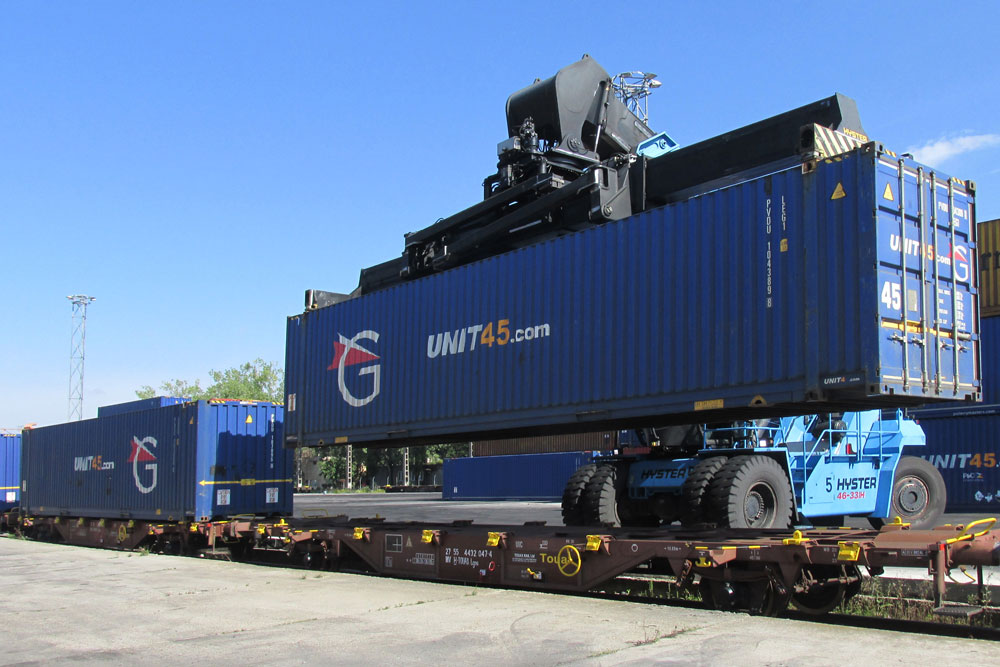By 2050, the EU hopes to have doubled the share of intermodal transport in European shipping services. Combined transportation is a more environmentally friendly, efficient, and low-risk solution for reducing freight emissions. The combination of road, rail, and other efficient modes of transportation has the potential to significantly reduce carbon emissions in the EU. Carriers anticipate that the revised Combined Transport Directive will regulate and encourage businesses to adopt “green” transportation solutions. The legislative document, which went into effect more than 20 years ago, needs to be updated to include the EU’s current carbon footprint reduction targets outlined in the European Climate Agreement.
Main advantages of intermodal transport
Saving harmful emissions is a key advantage of combined transport, as most of the distance between the loading and unloading locations is covered by train. “In the last two years, GOPET TRANS has saved more than 35,000 tons of carbon emissions”, said Polya Bocheva, Intermodal Transport Manager for the company, which began offering combined transport services in 2013. Another advantage is that intermodal transport services are more predictable due to the exact timetables of trains entering and leaving the terminals in a pre-established order. Also, their prices do not fluctuate as much as those of other modes of transportation. “Obviously, changes in fuel prices impact costs, because road transport is used for last mile delivery,” said Polya Bocheva. Last but not least, with intermodal transport the delivery of dangerous goods is facilitated in terms of documentation and it is safer, as most of the trajectory via rail avoids crowded routes.
Intermodal transport for all
Practically all goods transported via road could be transferred to an intermodal train in compliance with the requirements of all stakeholders. “The transport of chemicals in specialized containers, raw materials for light and partly heavy industry, household goods and many others are fully compatible with intermodal transport units – 45HC containers and intermodal trailers with dimensions identical to standard trucks”, emphasized Polya Bocheva. According to her, combined transport solutions are more suitable for customers with large and regular volumes, and truck transport – for those who are more sensitive in terms of transit time, have irregular volumes or preponderantly LTL shipments.
Increasing the competitiveness of Bulgaria in intermodal transport
Leading reasons for the delay in intermodal transport services’ implementation in Bulgaria are the unsatisfactory state of infrastructure, insufficient integration of the national railway network with the European one and the lack of connections with sea and inland water ports. Also, most of the existing container terminals in Bulgaria are of the 1970s and do not meet modern requirements for efficiency and safety of loading and unloading operations, warehousing and storage. “By modernizing the railway infrastructure and terminals, better coordination between the different modes of transport will be ensured and reliable and fast railway connections between the terminals will be established,” Polya Bocheva said. According to her, this will attract the attention of more customers and will make businesses change their policies to a “greener” future in the long run. “In recent years, the attitude of Bulgarian businesses is slowly changing and we believe the expected real changes in the transport sector will take place,” she said.
GOPET TRANS: early mover in intermodal solutions
GOPET TRANS started its first intermodal deliveries in 2013 and for almost 10 years the company has been connecting the Balkans to Western Europe and the UK. The international transport and logistics company uses well-developed terminals in the western part of Romania, through which it connects with Western Europe. “We aim to provide a customer-friendly ‘All in One’ solution: road, rail, sea, and air transport, warehousing and logistics services, from first to last mile,” said Polya Bocheva. Today, GOPET TRANS’s intermodal division is looking to expand its network of destinations, increase the frequency of deliveries and provide more services to businesses in order to reduce their carbon footprint. “We believe that the future of intermodal services is ‘light green’, we hope to form long-term partnerships with European rail carriers and we expect businesses to adopt green ideas more easily, because cleaner nature will bring joy to our children as well,” concluded Polya Bocheva.
Combined deliveries from GOPET TRANS
Organizing combined long-distance transport is no longer a challenge, but an innovative solution to alleviate highway traffic. The standard combined deliveries offered by GOPET TRANS are “Door to Door”, and to customers with regular loads the company provides the so-called “Pick & Drop” service. “This allows us to optimize the schedule from the terminal to the point of loading or unloading, and the customer has the opportunity to do the same with available goods and staff,” explained Polya Bocheva. Following a prearranged and highly reliable transport plan, the customer and the transport company maintain a balance in cargo capacity. In addition, GOPET TRANS provides daily shipment tracking and fixed deliveries.

